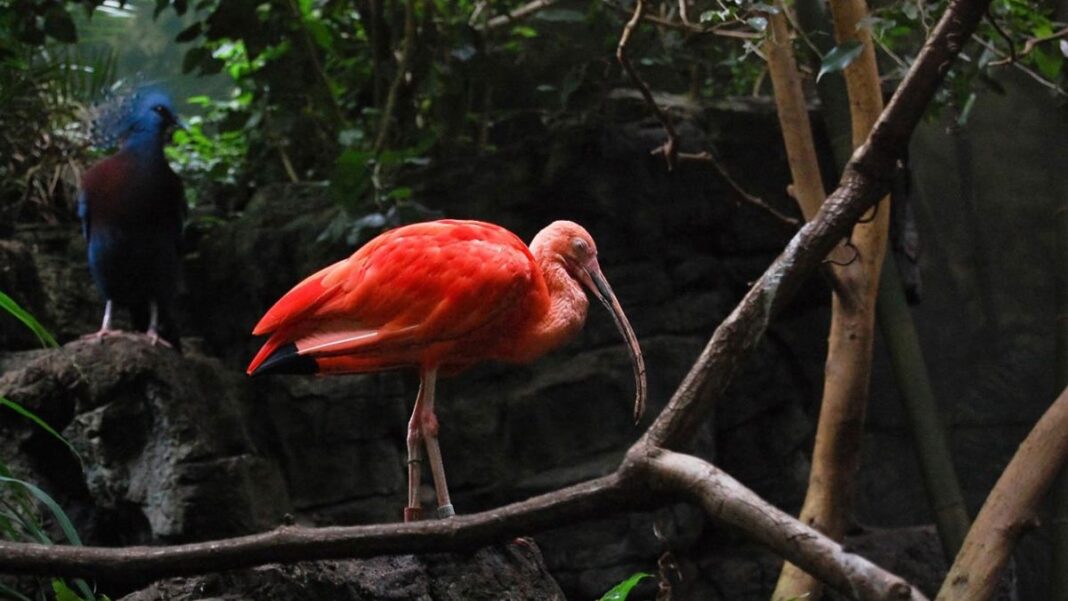The Caribbean islands are home to an incredibly diverse range of wildlife, from brightly colored birds to sea turtles and iguanas. If you’re planning a trip to the Caribbean, taking the time to learn about the local wildlife can help you appreciate the natural beauty of these islands even more. In this article, we’ll provide an overview of the wildlife you can expect to see on your travels.
One of the most iconic animals of the Caribbean is the green sea turtle, which can be found in the waters around many of the islands. These turtles are an endangered species, but conservation efforts have helped to protect their populations. You may also spot hawksbill turtles, which are known for their distinctive beaks.
Birdwatchers will be in paradise in the Caribbean, with over 560 species of birds found across the islands. Some of the most popular birds include the flamingo, the pelican, and the colorful parrots and macaws. Other animals you may encounter include iguanas, monkeys, and even dolphins and whales if you’re lucky enough to take a boat tour.
Habitats and Ecosystems
The Caribbean islands are home to a diverse range of habitats and ecosystems, each with its unique flora and fauna. Here are some of the most prominent ones:
Coral Reefs
Coral reefs are one of the most important ecosystems in the Caribbean. They provide a habitat for a wide variety of marine life, including fish, sea turtles, and sharks. The reefs are made up of tiny animals called coral polyps, which secrete a hard, limestone skeleton. Coral reefs are under threat from a variety of factors, including pollution, overfishing, and climate change. It is important to protect these ecosystems to ensure the survival of the many species that depend on them.
Mangroves
Mangroves are a type of coastal forest that grows in the shallow waters along the coast. They are important ecosystems that provide a habitat for a variety of species, including fish, crabs, and birds. Mangroves also help to protect the coast from storms and erosion by absorbing wave energy and stabilizing the soil. However, mangroves are under threat from deforestation, pollution, and development. It is important to protect these ecosystems to ensure their survival.
Rainforests
Rainforests are lush, tropical forests that are home to a wide variety of plant and animal species. They are an important ecosystem that provides a habitat for many species, including monkeys, birds, and insects. Rainforests also play an important role in regulating the Earth’s climate by absorbing carbon dioxide from the atmosphere. However, rainforests are under threat from deforestation, mining, and agriculture. It is important to protect these ecosystems to ensure the survival of the many species that depend on them.
In conclusion, the Caribbean islands are home to a diverse range of habitats and ecosystems, each with its unique flora and fauna. It is important to protect these ecosystems to ensure the survival of the many species that depend on them.
Characteristic Fauna
The Caribbean is home to a diverse range of fauna, including mammals, birds, reptiles and amphibians, and marine life. The region’s unique geography, climate, and ecosystems have allowed for the evolution of many endemic species.
Mammals
The mammalian fauna of the Caribbean is relatively limited, with only a few native species. These include the Hutia, a group of large rodents that are found on several islands, and the Jamaican Fruit Bat, which is one of the region’s only native bat species.
Birds
The Caribbean is a birdwatcher’s paradise, with over 500 species of birds found across the islands. Many of these species are endemic, meaning they are found nowhere else in the world. Some of the most iconic Caribbean birds include the Jamaican Tody, the Cuban Trogon, and the Hispaniolan Parrot.
Reptiles and Amphibians
The Caribbean is home to a wide variety of reptiles and amphibians, including iguanas, geckos, snakes, frogs, and toads. Many of these species are endemic to the region, and some are endangered due to habitat loss and other threats. The Rhinoceros Iguana, found on several islands, is one of the largest and most impressive reptiles in the Caribbean.
Marine Life
The waters surrounding the Caribbean islands are teeming with marine life, including a wide variety of fish, sea turtles, and coral reefs. Many of these species are endemic and have adapted to the unique conditions of the region’s coral reefs and seagrass beds. Some of the most iconic Caribbean marine species include the Queen Conch, the Hawksbill Turtle, and the Blue Tang.
Overall, the Caribbean is a fascinating and diverse region with a rich history and culture. Its unique fauna is an important part of its natural heritage and a vital resource for its people. By learning more about the characteristic fauna of the Caribbean, you can gain a greater appreciation for this remarkable part of the world.
Frequently Asked Questions
What species are native to the Caribbean?
The Caribbean is home to a variety of unique and diverse species, including over 6,000 plant species, 150 freshwater fish species, and 1,300 bird species. Some of the most iconic wildlife found in the region includes the West Indian manatee, the green sea turtle, and the Caribbean flamingo.
Which Caribbean island offers the greatest biodiversity?
The Caribbean islands are all unique and offer their own distinct biodiversity. However, some of the islands with the greatest biodiversity include Cuba, Hispaniola, and Puerto Rico. These islands are home to a wide variety of flora and fauna and have been designated as biodiversity hotspots.
How has the Caribbean’s ecosystem supported such diverse wildlife?
The Caribbean’s diverse wildlife can be attributed to its unique ecosystem. The region’s warm climate, abundant rainfall, and varied topography have created a favorable environment for a wide variety of plant and animal life. Additionally, the Caribbean’s isolation from other land masses has allowed for the evolution of many unique species.
What are the primary threats to wildlife in the Caribbean?
The primary threats to wildlife in the Caribbean include habitat loss, pollution, overfishing, and climate change. Development and tourism have led to the destruction of many natural habitats, while pollution from agriculture and industry has contaminated the region’s waterways. Overfishing has depleted fish populations, and climate change has led to rising sea levels and ocean acidification.
How have introduced species affected the Caribbean’s wildlife?
Introduced species have had a significant impact on the Caribbean’s wildlife. Non-native species such as rats, cats, and mongoose have been introduced to the islands and have preyed on native species. Additionally, invasive plant species have outcompeted native plants, leading to a loss of biodiversity.
What conservation efforts are in place to protect Caribbean wildlife?
There are a variety of conservation efforts in place to protect Caribbean wildlife. Many of the islands have established national parks and protected areas to preserve natural habitats. Additionally, efforts are being made to reduce pollution and overfishing, and to control the spread of invasive species. Education and awareness campaigns are also helping to promote conservation efforts throughout the region.

